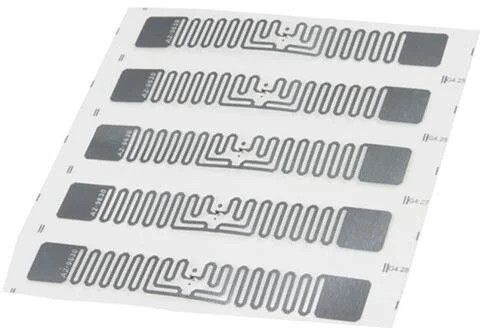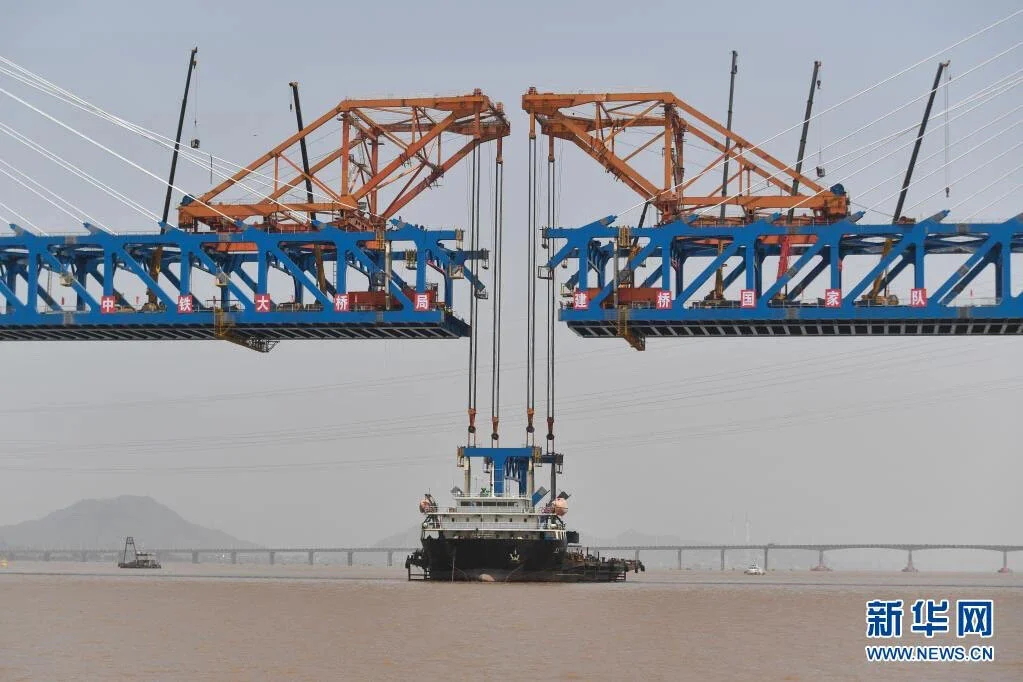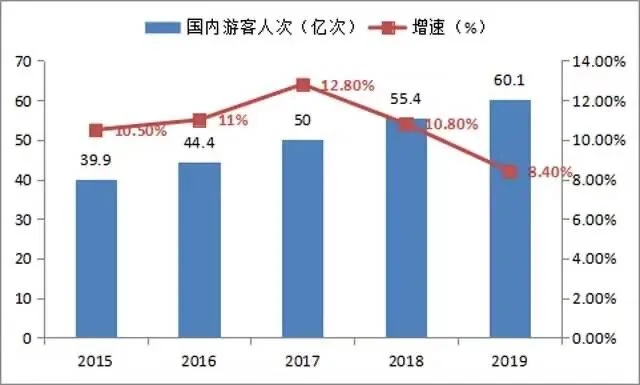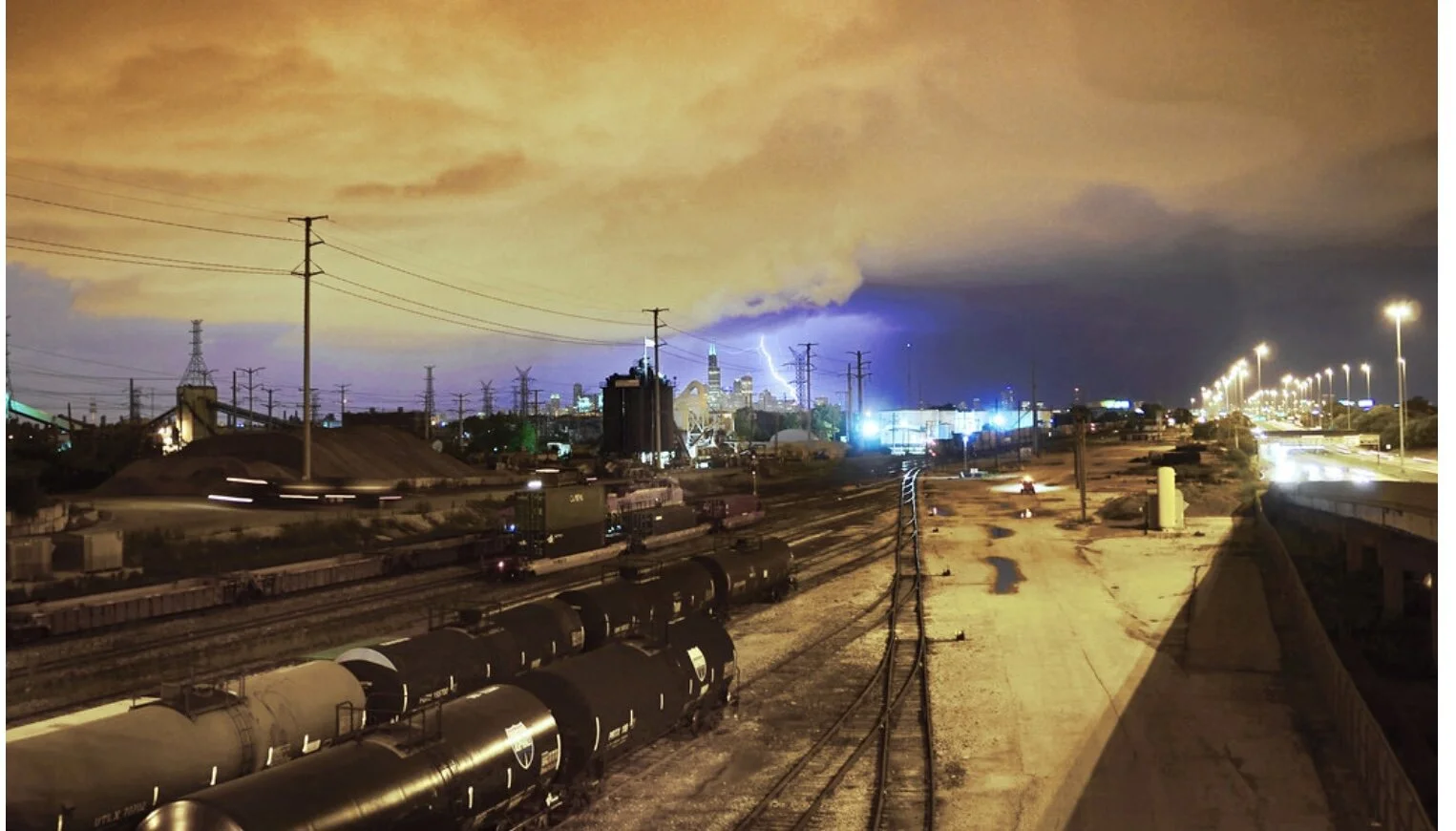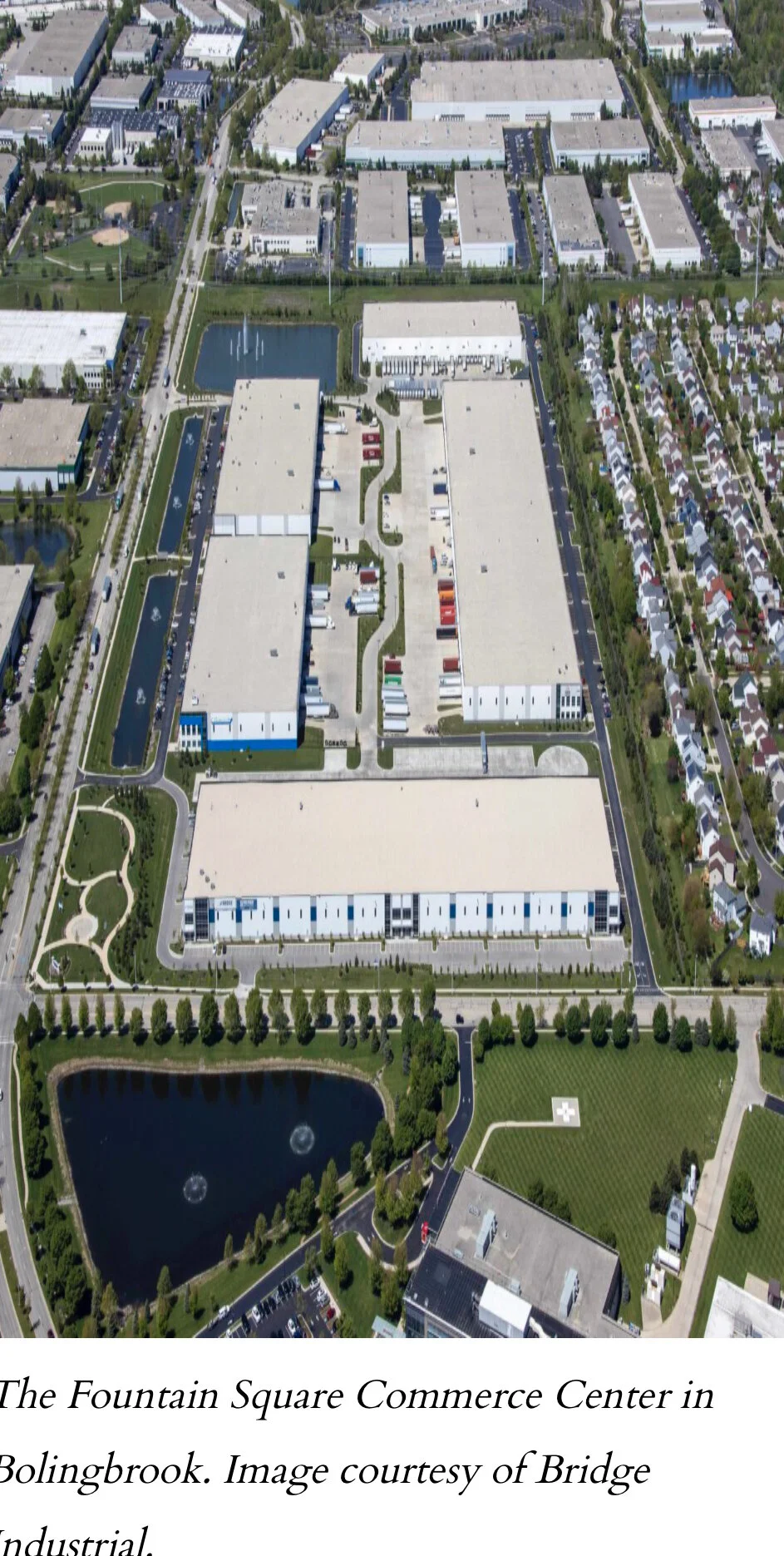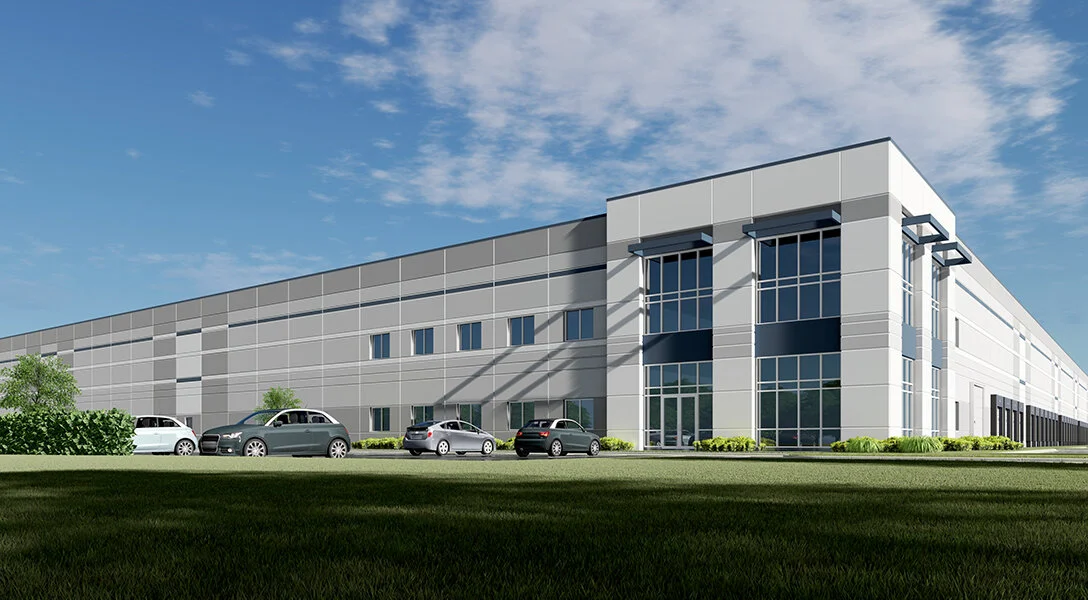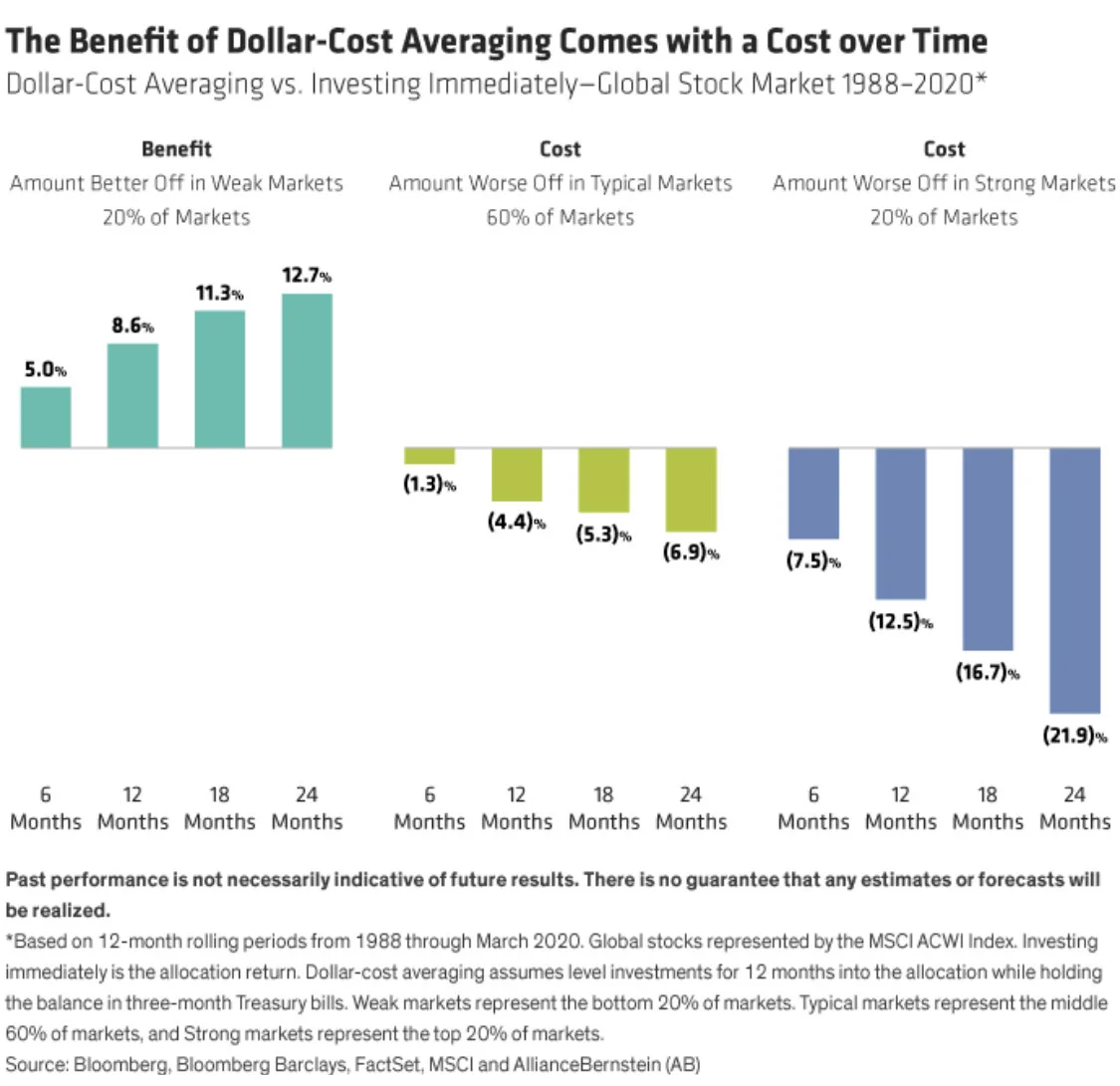How to Stop Smart Buildings from Becoming Hackers’ Playgrounds
BY JOHN MEKO
Smart technologies have transformed the way we live, work and communicate—we've become accustomed to a highly tech-enabled lifestyle and we now expect this to be present in our professional lives, too. Such technologies have the ability to make our workspaces more productive with automatic visitor check-in, healthier with improved air quality monitoring, and more sustainable with intelligent energy and water tracking. And when implemented properly, smart technologies enable landlords and building managers to make buildings smarter by using more advanced systems, such as access control, fire alarm and compliance management.
However, security does not end with fire safety and traditional barriers to the outside world. Cyber criminals have become a real threat, invading everything from nanny cameras to refrigerators. Either of those items—and virtually any other Internet of Things (IoT) device—may serve as a conduit to breach an entire network. This is such a concern that, reportedly, President Joe Biden's Peloton will not be allowed to enter the White House for fear of a security breach.
Yet, as people return to their physical workplaces, they'll want to come back to tech-savvy environments. Research shows that 80 percent of employees want to work in a technologically advanced office, so a tech-enabled environment isn't just a nice-to-have for the working world—it's essential. In order to create environments that are safe, secure and free of cyber threats that could compromise users' privacy or their security, landlords need to establish the right protocols and standards in their buildings to empower tenants to have safer environments for their users and their data.
The Smarter the Building, the Larger the Attack Surface
Smart and connected are often used interchangeably, but there is an important differentiator. While any aspect of a building could be "connected"—lights, plumbing, heating and cooling, access control, to name a few—they are not necessarily "smart." A truly smart environment is one which is seamlessly integrated and is purpose-built with security in mind from day one, minimizing the risk of potential threats.
Smart Buildings Must Be Led By the Right Protocols and Standards
Cybersecurity cannot be obtained without first establishing the necessary policies, practices and testing processes that ensure the building's systems and data are secure. Those policies must then be adhered to, in order to ensure that security is maintained. This encompasses not just the approach to securing the networks, but ensuring the users of the building are aware of cyber best practices and regularly follow standard procedures.
These can range from something as simple as ensuring that the computers used for monitoring building-management systems aren't also used for sending emails, or as complex as segmenting networks based on vendor usage. In doing so, landlords can minimize the risks and the potential consequences of a system failure, whether in error or through deliberate action from a malicious hacker outside of the system.
Strong Security Measures Protect Data, Too
Smart buildings contain a treasure trove of data that can be used to learn more about how the space is being used, how much energy is required, and how the space can be customized to better-suit employee needs. Given that every smart asset produces vast amounts of data, organizations need to be able to securely collect, analyze and make smart use of it without compromising security. This means having strong data-governance frameworks and physical protection of the data networks.
The Office of Tomorrow Needs to Be Smarter and More Secure
Smart buildings—those that deliver outstanding outcomes for all users, through digital technology, to exceed their evolving expectations—are expected to provide the highest levels of security. With the right technology at their fingertips, landlords can equip their offices for the modern, tech-loving workforce that has grown accustomed to the benefits of working in a home environment. Using technology as a new incentive to bring the workforce back to the office requires proper thought to go into implementing state-of-the-art technology without compromising on digital or personal safety.
Cyber Threats to Industrial IoT: A Survey on Attacks and Countermeasures
by Konstantinos Tsiknas, Dimitrios Taketzis , Konstantinos Demertzis ,and Charalabos Skianis
Abstract
In today’s Industrial Internet of Things (IIoT) environment, where different systems interact with the physical world, the state proposed by the Industry 4.0 standards can lead to escalating vulnerabilities, especially when these systems receive data streams from multiple intermediaries, requiring multilevel security approaches, in addition to link encryption. At the same time taking into account the heterogeneity of the systems included in the IIoT ecosystem and the non-institutionalized interoperability in terms of hardware and software, serious issues arise as to how to secure these systems. In this framework, given that the protection of industrial equipment is a requirement inextricably linked to technological developments and the use of the IoT, it is important to identify the major vulnerabilities and the associated risks and threats and to suggest the most appropriate countermeasures. In this context, this study provides a description of the attacks against IIoT systems, as well as a thorough analysis of the solutions for these attacks, as they have been proposed in the most recent literature.
1. Introduction
According to the Industry 4.0 standard [1], cyber-physical systems within partially structured smart factories play a central role in monitoring and supervising natural processes by taking autonomous and decentralized decisions in order to maximize the production process. An important factor for achieving this target is the IIoT operational network, where the logical systems communicate and collaborate in real time to implement all kinds of intelligent production solutions, organizational services, and operational processes, required to fulfil the production chain [2].
Specifically, IIoT refers to all interconnected sensors, instruments, and other devices, which in combination with industrial applications, including production and energy management, create a complex network of services, which allows the application of automation at a higher level (see Figure 1) [3].
Figure 1. Generalised IIoT system architecture.
This connectivity allows data collection, exchange, and analysis, as it facilitates the performance improvement across the production chain. It also enables the manufacturing sector to make huge innovative leaps, gain significant extroversion, and develop activities that were previously impossible.
It should be emphasized that the complete transformation of the supply chain into a truly integrated and fully automated process based on the IIoT presupposes the continuous and uninterrupted exchange of information from every stage of the production scale. For the implementation of this communication, IIoT systems are often combined in a multilevel architecture, in which at the hardware level are considered the physical systems (for instance sensors, actuators, control systems, security mechanisms, etc.), at the network level the physical networking media (wired and wireless), and finally at the upper layers the protocols that collect and transmit information from the communications stack.
The continuous increase of connectivity and the use of standard communication protocols, which are implemented under Industry 4.0 standard, however, creates a strong need to protect critical industrial systems from cyber security threats [4]. The industrial systems that control the production process and the operation of the smart factories have constant access to the internet and the industrial networks, but in addition to the information and data of the company to which they belong. Common devices of this type are called industrial control systems (ICS) [5]. The most common ICS are SCADA (supervisory control and data acquisition) systems and sensors used in control loops to collect measurements and provide process automation [6]. These systems are interconnected within the IIoT network; they are active devices in real-time industrial networks, which allow the remote monitoring and control of processes, even when the devices are located in remote areas.
This networking and connectivity improve the operational efficiency of the system, but at the same time, they pose significant challenges for the means of securing the infrastructure [7] in terms of confidentiality, integrity, and availability. Another very important factor that further deteriorates systems’ integrity is that both the machines and the devices in modern industrial facilities are designed initially to facilitate functionality and not to provide a secure environment, which makes them particularly vulnerable to cyber-attacks.
Exploiting the vulnerabilities of the communication protocols that are widely used in the Industrial IoT, as well as the vulnerabilities related to their operational control and how to use them, may result in compromising the critical devices applications, the denial or non-availability of essential services, or even their partial or total destruction, with incalculable consequences [8].
Generally speaking, the most relevant studies conducted so far focus on the security risks in IoT systems. For the particular environment of the Industrial IoT systems, however, there is no available extensive research to our best of our knowledge. In addition, the existing studies fail to contribute substantially to the awareness and clear understanding of the risks associated with IIoT systems as well as the severity of the attacks against them, which in most cases results in great damage and even loss of human lives.
In this sense, this paper presents an extensive study of the most popular ways of attacking industrial applications, as well as the corresponding literature studies related to them, with the aim to provide a more effective, cyber-security-oriented approach and ultimately lead to a more resilient industrial environment.
The main contribution of this work is to provide researchers, but also organizations dealing with Industrial IoT technologies in general, with a comprehensive study on issues related to cyber threats on industrial equipment, as well as the latest countermeasures for the protection of the infrastructure in question, through a critical and benchmarking framework. In this context, the main difference from the other IIoT surveys is the provision of a complete, up to date, and valid reference framework for the identification and the assessment of the risks related to the ever-evolving industrial environment.
The study is organized as follows: Section 2 reviews related work, and Section 3 gives a detailed description of the main risks that can be found in the Industrial IoT environment, the ways they operate, and the associated effective solutions that have been proposed in the most recent literature. Section 4 presents the main results of our study, and finally the last section draws the conclusions and outlines future research directions.
2. Metasurvey
In this section a literature review on the surveys works on the threats associated with the industrial IoT systems. The main security risks are discussed, along with the suggested countermeasures. In particular, we discuss their contribution in the field, and we raise topics of interest that require further investigation and analysis.
Some of the modern attacks on critical infrastructure networks, such as power grids [9], are related to undermining actuators or sensors located in the physical layer, attacks against connections between different devices in the data-link layer, or more specialized attacks to compromise specific control systems such as SCADA devices [10].
SCADA devices are industrial automation control and telemetry systems, consisting of local controllers, which communicate through the industrial IoT network. In cases of advanced cyber-attacks [11], actuators or sensors isolation strategies are usually performed in order to falsify the normal values of the sensors and alter the mode of operation of the cyber-physical systems in an advanced industrial environment. For example, in a cyber-attack on a SCADA potable water disinfection system, the automations related to the treatment and production of clean water, the special flow meters, level, conductivity, and pH analysis, as well as the pumps that calculate the doses of chemicals, could be altered with devastating results for public health.
This study in particular simply lists the building blocks of a functional SCADA architecture, while an analysis of the attacks in the physical layer is completely superficial. In addition, the authors report five types of attacks and attack vectors (source code design and implementation, buffer overflow, SQL injection, cross site scripting (XSS), and effective patch management application), without providing information on the attacks against the software and without giving detailed explanations that could focus on specific methodological approaches on mitigation or prevention. Finally, regarding the communication layer of SCADA systems, the study is devoted to superficial references to the general ways of attacking communication systems and specifically to the unnecessary ports and services, communication channel vulnerabilities, and vulnerabilities of communication protocols. In summary, this study fails to contribute substantially to the awareness and clear understanding of the risks associated with SCADA systems as well as the severity of the attacks against them, which in most cases results in great damage and even loss of human lives.
A more careful approach to the threats related to the industrial IoT systems is presented in [8], where the authors provide a detailed list of possible attacks per layer of the five functional levels of the industrial IoT, with the first three being part of operational technology (OT), while the other two are part of information technology (IT) (see Figure 2). The first functional level includes systems that perform the physical processes of the IIoT, such as embedded devices, sensors, actuators, transmitters, and motors. Attacks aimed at this level require an excellent knowledge of the design of the IIoT system, and access to the specifications of active devices, engineering plans, and detailed information about their installation and operational functionality. The second functional level incorporates the specialized equipment, which communicates and controls the devices of the first level, such as distributed control systems (DCS), programmable logic control (PLCs) and gateways. Attacks at this level aim at preventing legitimate communication between the two levels and controlling the flow of communication. The third functional level is the SCADA and all related industrial automation control and telemetry systems, such as data acquisition devices, master stations, and human machine interfaces, which communicate via the IP protocol. Many of the attacks at the SCADA level rely on IP packet creation techniques with false attributes such as the source address, in order to disguise the identity of the sender of the packet, encouraging the recipient to think that it came from a legitimate network user. The fourth functional level includes business planning services, such as office applications, intranet, web, and mail services. Attacks targeted at this level exploit known or unknown vulnerabilities of these services and enter malicious code where the application expects legitimate data from the user in order to gain access with administrator privileges.
F2. Layered IIoT architecture and possible attacks.
The fifth functional level includes high level services such as analytics, data mining methods handled by the enterprise applications, and cloud computing services. Attacks at this level include a set of malicious actions like interception and deception, but also more advanced types such as adversarial attacks.
It should be noted that the authors of this study, between levels three and four, place a demilitarized zone that includes service servers to which users connect on untrusted networks.
Although this study provides a solid approach on how the IIoT works and the corresponding vulnerabilities associated with it, it is generally considered incomplete, as it does not provide examples of similar attacks, or techniques that could prevent them. It is rather a survey on the known types of attacks, which provides some minimal information that can be easily extracted by the literature.
A holistic approach based on the business planning and the standardization on security requirements designed by the standardization bodies Industrial Consortium and OpenFog Consortium is presented in [12]. Given the complex nature of the IIoT ecosystem, the paper examines the security requirements of industrial connection and communication protocols, based on a three-tier architecture and whether these protocols used at each level provide a certain level of security. In particular, it initially presents an abstract three-tier IIoT architecture, which includes the main components of most IIoT developments, categorizing it in a very clear way (Figure 3).
Figure 3. Three-tier architecture of IIoT connectivity and communications standards.
The edge tier consists of end-points and edge-based gateway devices, composing a proximity network, which connects sensor devices, actuators, and control systems. The gateway devices provide a grouping point for the network, allowing internal inter-level communications, but also layered communications with the higher second level, the platform tier, where the connection is made as an access network for data transfer and control between the levels, which is implemented as connectivity via internet or mobile network. The platform tier contains service-based and middle-ware applications, such as analytics services, data transformation, data integration, etc. The interface with the third and higher level, which is called the enterprise tier, is done with a service network, which is mainly based on the Internet. Finally, the enterprise tier is used for high-level services, such as enterprise applications, cloud computing, domain services, hosting, etc. At this level, end users can interact with the network through specially designed interfaces. Based on this architecture, T. Gebremichael et al. proposed a set of connectivity protocols per level and the security features required for the secure device implementation in IIoT networks. The expansion of these implementation technologies also allows for the distribution of security requirements between the different areas of the network and creates embankments that could serve as backup protection in the event of wide scale breaches.
Finally, the authors of study [13] present a detailed study on SCADA attacks. SCADA systems are the main hardware of the IIoT ecosystem, consist of various entities organized in a hierarchical structure, and are used to monitor the various industrial processes. They include techniques of integration of data acquisition systems, data transmission systems, and human–machine interface (HMI). HMI is a user interface that connects a person to a device, mainly used for data visualization and production time monitoring, while also visualizing machine input and output information. The general description of SCADA architecture includes the master station/terminal unit or master unit (MSU/MTU) which is the control center of a SCADA network, the sub-MSU/sub-MTU acting as a sub-control center, the remote station units/remote terminal units (RSUs/RTUs), acting as the intelligent end devices (IEDs), and the programmable logic controller (PLC), used to monitor or collect data from sensors and actuators. This study summarizes the most typical attacks against SCADA systems, the ways in which they occur, and the tools commonly used. More specific, the following modes of attack are presented.
Read more…
Specially Designed RFID Tags Provide Solutions for Complex Business Needs
BY KEN HORTON
Radio frequency identification technology has been embraced by a growing number of industries to improve the quality and timeliness of data used for asset management. RFID systems collect data automatically, freeing up time, labor and capital resources and reducing costs. Businesses need high read rates from RFID tags to ensure the accuracy of their data. Selecting the right tag—standard or custom—is critical to the proper functionality of an RFID system.
While a standard, off-the-shelf tag works well for many applications, there are circumstances under which a standard tag falls short. When optimizing performance becomes tricky or impossible with a standard tag, it is worth considering a custom tag to improve an RFID system's performance. There are several factors that may make it difficult for a standard tag to meet the requirements of a given business process. Here are some of the most critical factors that might dictate the need for specially designed tags.
Environmental Materials
The materials on which a tag is mounted, the materials surrounding it and any materials that may be moving around the tag during the business process all impact how well a reader will pick up its signals. A tag designed to compensate for or take advantage of these environmental factors can often out-perform a standard tag designed without such considerations.
The factor that most often impacts the performance of RFID systems is the amount of metal in the tag's environment. Tags that will be mounted on or near metal must be properly designed to work on a conductive substrate. Clever engineering can improve the read range of tags mounted on metal or other conductive surfaces.
RFID energy cannot pass through metal, so tags can be missed if they are positioned in the shadow of a nearby metal object. On the other hand, metal reflects some RFID energy, and a tag design can take advantage of these reflected signals. Other materials that can affect tag performance are fluids, both liquid and in the form of high moisture content in wood or other hydrophilic materials. Proper tag design can compensate for these material-related effects and ensure good read rates even in these challenging environments.
Durability
Standard tags are designed for applications that place standard duress on the tag. Most RFID tags are designed for the benign conditions of an office, retail or warehouse setting. They cannot tolerate much exposure to moisture, high heat levels or sub-freezing temperatures. Other tags are designed for outdoor use. They can handle the rigors of exposure to any sort of weather conditions, from the moisture and cold of an arctic expedition to a desert safari.
Yet another level of durability applies to tags that can withstand the extreme conditions of industrial processes like paint-curing chambers, autoclave sterilization or cryogenic storage. If an asset being managed is subject to extreme conditions, a tag tailored to tolerate these conditions will be needed.
Stressors that a custom tag can be designed to tolerate include extremely high or low temperatures, very acidic or basic chemistries, high or low pressures, high vibration and extended immersion in fluids. A medical device manufacturer's analytical product that is subject to high-temperature environments makes a custom tag the right solution to achieve durability. Over-the-road vehicles exposed to road salt and freezing temperatures require another type of durability. There are many applications for which an off-the-shelf tag may not have the right set of durability attributes for a particular use case.
The Right Fit
Another factor that motivates customers to develop special tags is geometric constraints. Some devices have limited space in which to mount a tag, or the space has an unusual shape. In other cases, the tag must fit around or into another device whose geometry is not compatible with the square or rectangular shape of most standard tags. A designed-to-specification tag can often solve tagging problems that are driven by the geometric constraints associated with the item being tagged. For example, doughnut-shaped tags are called for to fit around cylindrical parts. Tags can also be designed to fit into cavities in other parts.
Cost Considerations
Every application has cost constraints, and sometimes a standard tag will not meet those constraints. With a designed-to-purpose tag, it is often possible to strip out the features of a standard tag that are not needed for the customer's application, but which add significant cost.
Features of standard tags that add cost but do not always provide benefit to the user include holes for bolt or screw mounting, a plastic cover or encasement, and an expensive construction material for which another material can be substituted. With a clean sheet of paper, the designer can focus on delivering the RF performance needed by the application without features or materials of construction that are not needed, and can reduce the cost of the solution by providing only the needed feature set.
Engineering for the Application
Developing a specially designed tag starts with clear objectives and requirements, including timeline, cost, geometry and the environment of the business process in which the tag will be used. Once the requirements are clearly understood, the designer can determine whether an existing tag design can be adapted to the use case—an option that is lower-risk, lower-cost and shorter-cycle—or if a completely new design is required. The RF performance of the new design will be modeled and simulated electronically. Then a prototype design will be created, and materials for construction of prototypes will be assembled. Modeling is rarely perfect, so several variations of the tag will be built so the best design for the application can be determined experimentally in the real world.
Tags are tested in standard conditions for baseline performance and then in conditions simulating ways in which they will be used. Through an iterative process, the design that best meets the requirements is selected for use in a pilot run or full production. The process for creating an application-specific tag is more complex and costly than selecting an off-the-shelf tag. However, there are business processes for which standard tags will not work, others in which they provide poor performance and yet others for which they are too costly. Tailored tags can provide benefits in terms of performance, durability and cost, which will result in an RFID system that provides a superior ROI.
Ken Horton is the CEO and cofounder of Vizinex. He focuses his time on sales and marketing and also being the CFO. Ken has worked in the RFID field since 2008, in operations roles as well as in sales and marketing. Prior to the founding of Vizinex, he served in executive positions in several small high-technology firms. His experience includes leadership positions in operations, engineering, and sales and marketing. For 25 years, his industry experience has included medical instruments, automated electronic assembly equipment, PC-related hardware and software products, and semi-conductor production equipment. Ken has an engineering sciences degree from Dartmouth College and an MBA from Stanford University, and he is a graduate of General Electric's two-year Manufacturing Management Program.
The Power of Serialization in Planning, Execution and Risk Aversion
BY ANSHUMAN AGARWAL
Inventory optimization and controlled supply chains are the need of the hour. While COVID-19 revealed supply chain shortcomings at the planning level, for example, the global retail industry witnessed inventory distortion of $1.8 trillion in 2020. There are challenges at the operational level, such as counterfeiting and illegal diversions, that also require immediate attention since they directly impact customers' safety and threaten brand image.
Inventory serialization—tracking individual pieces using unique serial numbers, similar to the international mobile equipment identity (IMEI) specific to a smartphone—is fast becoming a necessity to fight these challenges. From ensuring product delivery to providing waste management and fraud detection, serialization is helping brands attain complete visibility across their supply chains. RFID tags, QR codes and unique piece barcodes (UPBs) capture a product's journey and are used for serialization. They help in decision-making at the granular level and in determining the product's future.
Planning
Demand Planning: Serialization can access locational usage and help resolve demand supply mismatch issues. It can gather real-time data on performance indicators and evaluate the effectiveness of a product or service. It can also suggest improvements so brands can design specifically for the market. Action on emerging needs, trends and changing behavioral patterns can be taken rapidly to boost business. Based on a brand's regional capabilities, purposeful collaborations and partnerships can be made to serve local customers better.
Performance Assessment: Serializing inventory can help companies monitor a product's complete lifecycle, from launch and growth to maturity and decline. Industries dealing in items that present life-safety hazards if defective or expired—such as pharmaceuticals, CPG and so forth—can track each component to assess efficacy and viability. Businesses dealing in trends and fashion products can also use this data to make strategic calls on when to remove a non-performing style, discount a less popular design or capture a growing demand.
Better Inventory Control: Proper tracking and order management help to optimize inventory, shorten replenishment lead times, avoid stockouts and increase cash flow. By distributing inventory per demand, a company can avoid the unnecessary tying up of capital at one location. Items that have a short lifecycle, such as food and beverages, as well as fashion and children's products, can be moved through inter-store transfers within a region, in the shortest amount of time, in order to optimize sales and minimize inventory holding.
Sustainable Practices: The ability to track a product's journey back to its origin can help buyers and sellers ensure the usage of ethical, environmentally friendly practices. Industries such as fashion, which are currently under the radar for causing global environmental damage, can use serialization capability to practice sustainable retailing by measuring inventory accuracy and preventing inventory distortion.
Operations
Track-and-Trace: Serialization enables digital capabilities in physical products and helps to provide 100 percent visibility during the production, distribution and delivery phases. It helps to identify gaps and increase accountability at every stage of the supply chain. Faulty products can be returned to their origin, and issues can be traced to the root to prevent them from happening again. This is of great importance today, as offshore manufacturing gains prominence in most businesses.
Theft Prevention and Anticounterfeiting: Counterfeit products tarnish brand image and hamper revenue. Serialization can prevent high-quality and authentic products from slipping into the hands of unauthorized dealers, into the gray market or illegal channels in a region. Securing robust information on unique serial numbers can red-flag any attempts at cloning or other unusual activity, and immediately notify brands and buyers about fraud detection through alerts and messages, thus discouraging it from happening again.
Recall Management: Inventory reconciliation becomes easy with serialization; hence, product recalls can be faster and more accurate. By narrowing down defaults and defects to the individual product level, a company can take action immediately, reducing costs and negative impact on brand image.
Organized Warehousing: Fully automated, scanned-based operations and tracking at critical stages of inward, picking and packing allow warehouse personnel to dispatch the correct item within a service-level agreement. End-to-end traceability helps to enable faster auditing, cycle counting and bin consolidation within a warehouse. It also allows the "first in, first out" (FIFO) method of inventory control, thereby preventing old stock from becoming lost or misplaced. Unaccounted items can be tracked precisely and mapped to the right location. Since every action about each stock-keeping unit is captured, this helps to address the issue of accountability and improve manpower efficiency.
Supply chains are constantly becoming more complex. It is time to tighten the reins and build a strong foundational framework that is well-monitored and secured. Serialization is the most granular unit of inventory measurement and will form the future of inventory management. It can optimize processes and generate opportunities for new capabilities. As digitalization and technological advancements help us to build a better future, let us work toward the foundation and ensure our back end is secured, too.
2021 RFID Trends for Industries and Events
By RFID Journal
For all of the issues and challenges it brought, we may most will remember- 2020 as the year of the rapid adoption of new technologies under some of the most trying conditions. Businesses around the world who were slow-walking their digital transformation initiatives had to adapt quickly and implement a variety of new solutions to maintain their operations.
One way companies can build enterprise-wide intelligence is using the latest radio frequency identification (RFID) technology. With the market expected to grow at a 9% compound annual growth rate (CAGR) and almost every industry benefiting from the technology, RFID is the ideal solution for any organization that needs greater visibility their supply chain. RFID also found many new applications, helped speed up retail processes, and allowed healthcare workers to track or trace individuals during the pandemic.
Top Seven RFID Trends to Look For in 2021
By providing a completely new way to track people, products, or any other commodity, RFID is no longer an emerging technology. RFID is suitable for use cases in almost any industry, including the healthcare, automotive, aerospace, and retail sectors. Accurately keeping track of inventory, inbound logistics, order fulfillment processes, or your entire supply chain provides clarity and insight into your organization's efficiency. Here are seven areas in which RFID is helping to improve business processes around the world.
Improving Retail Efficiencies
In retail environments, RFID can help improve stock and inventory accuracy while automating many of your company's manual processing tasks. From the receiving dock, shipping and distribution processes, to quickly locating an item in the stores, RFID helps speed up every element in the retail industry. You can even ensure automatic replenishment of inventory with the right solution. RFID implementation is changing the way organizations operate every element of their supply chains for greater visibility and accurate accounting of revenues. In 2021, this trend will continue and may even disrupt regular order fulfillment processes, including final delivery to the end user.
Tracing Traffic Inside the Store or Location
Keeping track of everyone who enters your facility is no longer optional. The COVID-19 pandemic requires businesses around the world to keep track of all the people who enter a location for safety reasons. Implementing a RFID system with accurate tracking for everyone who enters your store or building will ensure you can alert any individuals who encountered an infected person at that location. RFID also allows you to track equipment and products. You can plot the movement of items throughout your store to help you optimize processes based on historical data. The retail use cases for RFID include generating customer and product flows throughout the facility; ensuring you can see employee movements throughout the building; and tracking equipment and the users who accessed them during the workday.
Streamlining Checkout Procedures
Traditional checkout and payment processes are time-consuming and labor-intensive. Automating the procedures can help create a frictionless checkout and payment system. Another application is automating your customer loyalty program by recording all the items in a basket once the customer leaves the store. RFID systems don't depend on scanning every item like with barcode solutions. As the reader can tally the products automatically, you can charge customers and accept payment without any human resources involved in the process.
Reducing Theft and Improving Security
Theft remains a major concern for retailers, cutting into their bottom-line and leaching their profits. To secure every product, you can compare the flow against payment and sales data. Using RFID to track products throughout the facility will provide you with details about when a product left the store, who carried out the theft, and help police identify the perpetrator. You can also set up an exit tracking system that will alert you if someone tries to skip the checkout process, automatically triggering alarms. With an integrated RFID solution that keeps track of every product through your entire process, you can limit losses and prevent theft.
Investigate and Verify Your Supply Chain
More customers now care about the safe, responsible, and sustainable sourcing of raw materials and products. New applications for RFID technology continue to disrupt traditional business processes and provide new insights into the entire supply chain. A survey found that 52% of respondents were using active RFID technologies in some capacity. Monitoring your supply chains from inception to completion will also ensure you identify any issues early and can respond effectively against exploitative practices.
Automatic Vehicle Identification
RFID applications are particularly popular in situations where you need to identify items that move through a specific point automatically. Gathering traffic data for automobiles or keeping track of border entries and exits are easier with an RFID system. Electronic toll collections, tracking volumes of cars using a particular road, and monitoring the service history of cars are all new use cases where RFID proved to be invaluable. Creating an electronic record of an automobile's history and traveling patterns can help city planners, federal agencies, and retailers equally well.
Event Management and Safety
Although many in-person events will no longer go ahead during the pandemic, organizers can use RFID to improve conference safety and comply with all applicable regulations. Keeping track of attendees, their movements, and amount of people inside the facility at any time ensures organizers can manage how many people enter a venue, oversee their movements during the conference, and grant access to specific areas or sessions easily. Combining RFID with intelligent Internet of Things (IoT) sensors provides a safer, controlled event that reduces risk and ensures you can contact-trace attendees.
Discover the latest 2021 RFID trends at RFID Journal LIVE!. At LIVE!, we help organizations create unique experiences bringing together innovators who are at the edge of identification, tracking, and monitoring technologies. With 2021 looming, the main trends will be solutions that let you know who visited your locations, what they interacted with, and who else was there to keep your staff and consumers safe. To see where we can meet up at the next event, check out this page.
Health Frontiers: How RFID Helps Control and Prevent Infections and Medical Errors
By RFID Journal
The medical sciences are always looking for ways to implement innovative approaches to healthcare infrastructure, supply chains, and operational workflows. Recently, this drive toward digitalization and technology adoption became a priority for governments, regulatory bodies, and private organizations alike. It's because deploying technologies like RFID in healthcare can have an immediate impact on the entire process.
Five Benefits of RFID in Healthcare Systems and Infrastructure
In the medical and healthcare industries, RFID can assist wherever there is a need to manage, track, control, or stage resources. In pharmacies, RFID is helping to track medicine distribution from the manufacturer to the patient fulfilling a prescription. Medication managers throughout the manufacturing, distribution, and delivery stages are looking to RFID for improving control and limiting access to controlled substances.
The technology behind RFID and Near Field Communication (NFC) enables labs, hospitals, and the entire medical supply chain to track and trace biological samples, equipment, and drugs throughout their daily processes. With additional scrutiny required on drug and preventative medicine distribution and delivery, RFID is uniquely suited to overcome all these challenges. Here are some of the key areas in which RFID is making a positive impact on the prevention of infections and medical errors.
Reducing Medical Errors
Every year, thousands of patients die in hospitals and healthcare facilities due to medical errors. With the complexity involved in providing adequate care to patients, it's easy for a mistake to creep in when physicians do not have access to accurate patient information. According to some estimates, the number of patients who succumb to medical mistakes every year can be as much as 195,000. With RFID systems, healthcare providers can help prevent many of these errors and save lives. Clinicians, doctors, and emergency medical personnel need access to accurate and up-to-date information when responding to events. RFID enables the storage and rapid access to data using unique IDs that provide all the relevant incident data and medical history. With quick access to all relevant patient information, everyone from crisis management teams to emergency responders can ensure they provide the correct treatment and reduce the risk of a fatal error.
Enhancing Patient Care and Surgical Procedures
A range of different RFID healthcare applications has enabled medical practitioners to streamline everything from patient intake to traumatic events. RFID applications for patient care and surgical procedures include optimized billing and invoicing, since suppliers of components, devices, and consumables use RFID to generate accurate invoices automatically for procedures; improved patient safety, since companies use RFID to track consumables in surgeries, such as sponges, to make sure they didn't leave anything behind after the procedure; accurate patient identification, since RFID tags are helping physicians to accurately identify patients and prevent wrong-site or wrong-procedure occurrences in hospitals; and post-procedure monitoring, since after a procedure, monitoring the patient's vitals is possible with RFID tags that have capabilities like measuring temperatures or recording falls. RFID also makes it possible to increase operational efficiencies in hospitals by tracking administrative processes, managing throughput times effectively, and optimizing room utilization. With increased visibility into all healthcare operations, RFID allows administrators to pinpoint different areas where it's possible to improve.
Managing Disease Outbreaks and Pandemics
During pandemics (or during outbreaks that could lead to pandemics), RFID systems can track and trace patients, caregivers, and the vaccination process. For caregivers, facilities must track all movements to determine exposure. With vaccines, every dose may need special care during transportation and distribution to ensure its efficacy when being administered. RFID solutions can span the entire manufacturing, distribution, and administration process from start to finish. Serializing products with RFID tags, including real-time location systems (RTLS) in the procedures, and managing stock levels in times of crisis are vital in preventing an outbreak from becoming another pandemic.
Improving Hygiene Practices in Hospitals and Care Facilities
Hand-hygiene compliance is another area in which RFID systems can assist. Real-time continuous monitoring and tracking of all hand-hygiene practices prevent a healthcare worker from spreading a disease to other patients. Usually, an observer carries out all compliance checks, but this is intermittent and delivers inconsistent results. The subject will know the person is watching them for a set period. RFID location tracking gives compliance officers the ability to track the complete path of every caregiver and monitor (or record) all hand-hygiene events. In one case, RFID system tracking combined with CCTV footage had an accuracy rate of 93% compared to in-person observations. When dealing with an infectious disease, ensuring everyone remains compliant with the medical facility's procedures and rules remains a primary concern for everyone involved in the healthcare industry. RFID makes these oversight and governance processes easier to deal with and provides teams with accurate results.
Capturing and Generating Statistical Data
Administrators need accurate data that covers the entire medical and healthcare provision process to make informed decisions about resourcing, equipment inventory, and consumable consumption. Accurate information about all the elements required to improve the level of care in facilities using RFID-enabled middleware can optimize almost every portion of the process. Administrators can track staff during their shifts, count the medical machines in their inventory, record servicing and maintenance activities on devices, and monitor drug-delivery processes. This information helps planners and decision-makers to reduce bottlenecks and ensure the timely resupply of key consumables without requiring manual stock counts. Accurate location, procedure, and inventory data give administrators clear insights into their current procedures and, more importantly, generate precise data that informs all future decisions.
For more RFID in healthcare applications, join us at RFID Journal LIVE!. RFID and NFC systems are reshaping the world's medical supply chains, healthcare quality, and drug delivery systems. To find out more about the latest applications and use cases, join us in September 2021 to see what new capabilities RFID has to offer. We are also hosting digital events during the year, so check back regularly to find a track that applies to your organization or industry.
How Will RFID Change Retail in 2021?
BY RFID JOURNAL
Throughout its rich history, radio frequency identification (RFID) technology has been ever-evolving. Recent pressure on supply chains has made many retailers revisit the idea of implementing an RFID solution. They're leaning into the technology to help improve operations and reduce the burden on staff. During the last 20 years, RFID technology has matured to the point that it can help most organizations optimize their business models.
RFID in retail environments saw early adoption, with Walmart implementing the technology for item-level identification years ago (the company has since halted such efforts). Since then, other retailers have embraced RFID as irreplaceable for supply chain tracking, stock management, inventory control and retail sales management. Advances in supporting technologies like the Internet of Things (IoT), big data, and artificial intelligence are giving RFID new life and helping to redefine what's possible in the retail space.
Even before the COVID-19 pandemic, the global RFID market was set to grow by more than 10% CAGR during the next five years. Analysts revised their projections last year, but the RFID industry is still expected to see an average growth of more than 6% annually until 2025.
Latest RFID in Retail Trends for 2021
RFID and its associated technologies, such as Near Field Communication (NFC) and Bluetooth Low Energy (BLE), are reshaping the retail landscape across the entire lifecycle. With logistics, distribution, stock placement and fulfillment already finding ways to improve processes using RFID, the increased adoption continues to lead to innovations.
Current statistics support this assertion. According to GS1, 47% of the items received by retailers carry RFID tags and 57% of retailers are now implementing the technology. With the additional insights into every element of retail operations, brick-and-mortar shops are looking to level the playing field against online competitors and are using RFID to enable their own ecommerce presence.
Although each business case varies, the latest trends continue to improve on existing efficiencies with reduced costs, easier integration and hybrid implementations. Here are some of the latest trends for RFID in retail that will shape 2021.
Introducing RFIQ for Retailers
Marshall Kay introduced a new concept for retailers in a recent Forbes article. RFIQ, according to Kay, allows companies to learn their RFID intelligence and understand where there are opportunities to improve. Although Kay readily admits he does not yet have a standardized test, some questions can help retailers uncover additional value from their RFID operations. Questions include: What is RFID and how does it benefit consumers? Which companies use RFID, and how does it help them? Why do competitors view RFID as essential, and where do they apply it?
The idea is that some organizations matured with the technology and today are benefiting from a higher intelligence in its use and application. For anyone looking to catch up, the learning curve may be steep but not insurmountable. Moreover, newcomers to RFID will have the benefit of learning from those that already paved the way and are utilizing the technologies it spawned.
RFID Is Bridging the Online and Physical Gaps in Retail
The RAIN RFID Alliance promotes the use and standardization of ultrahigh-frequency (UHF) RFID solutions. RFID doesn't just push for adoption and standardization—it also focuses on finding new and innovative applications for the technology. One way to achieve this is to educate retailers about how large-scale adoption may be cost-prohibitive and complex.
Instead, the Alliance advises that companies focus on elements like targeted accuracy, real-time visibility, omnichannel capabilities and securing inventory. With RFID, retailers can automate their inventory data and improve accuracy by 30%, while reducing out-of-stock situations by 50%. By streamlining the entire lifecycle of operations one step at a time, retailers can maximize their ROI and ensure a smooth RFID rollout throughout their organization.
Combining Item-Level RFID with 2D Barcodes
Many retailers remain locked into their legacy systems. Everything from their financial to material management systems took years to integrate with 2D barcode solutions. What last year showed us is that these technologies remain entrenched in the retail sector. Even if their inventory management did take more time, swapping out one system for another simply isn't feasible.
The answer to this question now seems to be to adopt the newer GS1 standards for both technologies, allowing companies to combine and integrate new RFID systems with legacy applications. For organizations that require stock accuracy, a local RFID system that integrates with national inventory can help increase efficiencies drastically. In some pilot projects, companies were able to cut costs in half by implementing RFID with their 2D barcode systems.
RFID and Big-Data Analytics
Big-data analytics is now a mature and intelligent technology that helps to improve business operations. The benefit of having a relationship between RFID and big data is easy to understand: better data equals better analytics. By gaining an overview of all operations, from source to fulfillment center, analysts can use this information to streamline routes, optimize inventory and predict demand for specific products.
The better connected the physical retail world becomes to the digital systems that manage them, the more efficiently a retailer can operate. The rapid development of information and communication technology, as well as improvements in RFID scanning and transmitting systems, means any organization can implement a solution that will help it increase efficiencies quickly.
AIM Global Updates RFID Testing Standard for Medical Devices
BY CLAIRE SWEDBERG
The latest version of the 7351731 standard offers updated guidance to help medical device manufacturers and users test their products with UHF, HF and LF RFID readers, to ensure immunity to RF transmission effects.
Industry standards group AIM Global has released the latest version of its standard for the testing of non-implantable wireless medical devices, to help users and manufacturers better determine if they are immune to emission from RFID technology. AIM's 7351731 standard provides companies with guidance to test medical devices and determine whether RFID transmissions pose any risk to their operability. The standard offers test protocols for 125 kHz LF and 13.56 MHz HF RFID compliant with ISO 15693, as well as UHF RFID transmissions and both active and passive technologies.
AIM is a global industry association that offers networking, education and advocacy to promote and standardize automatic-identification technologies. It covers RFID, barcoding and smart devices used in Internet of Things (IoT), real-time location system (RTLS) and blockchain applications. The organization's latest healthcare standard revision, which it announced in June of this year, provides updates to the previous version of the standard, which was developed by AIM's healthcare initiative workgroup, within the RFID Experts Group (REG HCI), according to Mary Lou Bosco, the COO of AIM and AIM North America.
Mary Lou Bosco
RFID is frequently used in healthcare environments for asset and inventory management, as well as for patient and personnel tracking. For instance, RFID tags can be applied to high-value equipment, laptops, carts and medications, as well as to packaging for surgical implants and tools. RFID-enabled wristbands and badges can be worn by hospital personnel, in addition to both adult and infant patients.
Test labs have been testing against the standard for several years, Bosco reports, and some have provided suggestions for improving the testing protocols to the AIM working group. This third version of the standard is intended to reflect the latest testing needs, and to be easier to implement than previous iterations. The update is part of regular review and revisions that AIM provides for all of its standards, "AIM periodically reviews these documents," Bosco states, "to make sure all the information is up to date and conforms with the most recent technology advancements."
Several ISO/IEC documents have been revised since the release of the initial standard, and AIM thus updated its standard to accommodate those changes. The working group adjusted the standard according to requests from RFID solution designers, Bosco says, as well as from medical facility engineers and administrators. All of the previous groups have performed the test methods and test levels for evaluating the electromagnetic immunity of non-implantable medical electrical equipment and systems to electromagnetic emissions from RFID readers. AIM has been working with these parties, she says, "to give as clear guidelines as possible with how to perform the testing."
The changes, which include clarification of some figures to make them easier to interpret, take into account updates to several ISO/IEC documents, as well as comments from the labs that performed the testing in the standard. "The specially appointed workgroup thought that enough new information was available to update the standard," Bosco says, "and make testing methodologies clearer for those reading and implementing the standard."
The standard guides medical device manufactures and end users on how to evaluate their devices' immunity to emissions as RFID readers interrogate tags within the vicinity. The test procedures are based on experimental results from several AIM members and testing labs that performed the standard's test methods, Bosco says. Working together, these parties reached an agreement on how testing should be performed and the verbiage that should be used to specify the standard's testing requirements.
Test protocols are included for the major commercial implementations of RFID. The standard is designed for testing existing medical electrical equipment and systems. For the purposes of this standard, Bosco notes, other technologies, such as Wi-Fi and ultra-wideband, are not considered. Instead, she says, LF, HF and UHF represent the most common RFID technologies currently deployed in healthcare environments.
While there is no official certification process for devices that pass testing, AIM has encouraged those that have carried out testing to contact the association with their results so that it may continue to collect a list of those who claim they can perform the test. The standard guidelines can also offer guidance for RFID solution designers, to help them determine during the designing stage whether medical electrical equipment and an RFID solution environment are compatible. Immunity to RFID reader testing is required by the FDA for medical devices.
According to the FDA, the use of RF wireless technology offers advances in healthcare, but because airways are shared, the function of a wireless medical device could be affected by the presence of other wireless devices within the vicinity. One example might be losing data or experiencing disruption in operation. The FDA advises healthcare facilities to consider the selection of wireless technology, quality of service, coexistence and security when choosing RFID and other wireless technologies.
Can private controlled high-speed rail stir "a pool of spring water"?
Gu Yang Economic Daily
Recently, two pieces of news about high-speed rail have attracted much attention. First, the Beijing-Shanghai high-speed railway, which operates at the fastest speed in the world, has ushered in its 10th anniversary; Second, Hangzhou-Shaow-Taiwan Railway has achieved full track laying and running, and will become China's first private controlled high-speed rail line after its official operation by the end of the year.
This is the business room on the Fuxing smart EMU G6 train taken on June 25. Photo by Wang Xiang (Xinhua)
As one of the world's busiest rail lines, the Beijing-Shanghai high-speed rail is far ahead in profitability. Public information shows that between 2014 and 2019, The net profit of Beijing-Shanghai high-speed railway increased by 39.4% annually. Even under the severe impact of Xinguan pneumonia epidemic in 2020, it still achieved a profit of 4586 million yuan, which is a veritable benchmark for high-speed railway profitability.
Such a high return, I am afraid there is no social capital not tempted. But for a long time, social capital has mostly played a supporting role in railway construction, especially in such an important infrastructure field of people's livelihood as high-speed rail. It was unimaginable for social capital to achieve absolute control. Now, the Hangzhou-Shaow-Taiwan high-speed railway is the first to "eat crabs," taking the lead in realizing the absolute control of social capital.Although its market prospects are uncertain in the short term, it will be a far-reaching icebreaker for the reform of the national railway investment and financing system。
In recent years, social parties to open and encourage social capital to participate in major infrastructure construction calls are increasing. For the need of economic development, some localities have made some useful exploration to attract social capital to participate in the construction of infrastructure projects and made some progress. But overall,Social capital in participating in the construction of projects is still lack of a clear grasp, asymmetric information, high financing costs and other factors, so that many social capital deterred。
Because of this, the "pool of spring water" stirred by the Hangzhou-Shao-Taiwan high-speed railway brings confidence to the social capital in the wait-and-see hesitation. This confidence comes not only from innovation in equity structure,More from the social capital to obtain a more adequate operating rights, income rights for good expectations。
It is understood that Hangzhou-Shaow-Taiwan high-speed rail holdings from the beginning to establish a "railway + PPP + industry" operation model, clearly proposedThrough property, shops, advertising space and more flexible exploration of commercialisation, replacing the traditional model of relying solely on ticket revenue. For example, the development reform, the State Railway Group and other departments have made it clear that they will support enterprises to determine their own fares, determine the number of trains, and give them the right to make decisions freely. In addition, social capital will benefit from the potential benefits of upgrading urban efficiency, industrial agglomeration and expanding employment brought by high-speed rail.
April 17, construction workers in the last section of the Jiaojiang Super Bridge of Hangzhou-Shao-Taiwan Railway hoisting construction. Photo by Huang Zongzhi (Xinhua)
It should be said that these policy initiatives demonstrate the government's determination and sincerity to attract social capital to participate in infrastructure construction, and also fully demonstrate the rational attitude of all parties to the project to respect the law of economic operation and follow the principle of marketization. As market analysis points out, under the new model,More emphasis on the rate of return on investment social capital is expected to be more focused on the people's livelihood security functions between the formation of a more benign and efficient interaction between the state-owned capital, which will help further the key role of investment.
At present, China's economy is continuing to recover. It is expected that consumption and investment demand will slowly recover in the second half of the year, which will give a stronger impetus to economic recovery.In this context, to further enhance the growth stamina of private investment, we must continuously stimulate the vitality of various social capitalOn the one hand, we should open up the market access of private enterprises, support their innovation and development, encourage private capital to participate in the construction of "two new and one heavy" projects and complement the weaknesses; On the other hand, we should strengthen the investment capacity of social capital, innovate investment methods, promote the implementation of cost-cutting policies for private enterprises, and make good use of bank credit, market bonds and other financial instruments.
Of course, to fully mobilize market subjects and social forces to participate in infrastructure construction, we should also make overall plans to strengthen the foundation, increase functions, benefit the long-term, benefit people's health, and prevent risks.In this process, we should fully stimulate the endogenous driving role of innovation. At present, in addition to the Hangzhou-Shaow-Taiwan high-speed railway taking the lead in the investment and financing system, The pilot of real estate investment trusts (REITs) in the infrastructure sector is also steadily underway, and we can expect more such innovations in the future to expand the scope for social capital to participate deeply in infrastructure construction.
Global Emerging Technologies Summit in Washington, DC
U.S. Embassy in China
The National Security Council on Artificial Intelligence (NSCAI) hosted the Global Emerging Technologies Summit on July 13, 2021 in Washington, DC.
Secretary Blinken said at the summit: “We need America and its partners to continue to be the world's innovation leaders and standard-setters, Ensure that all future innovations remain centred on universal rights and democratic values and that they bring tangible benefits to people's lives.”
Read the full text of the Secretary of State's speech by clicking "Read More" or by following the link below:
https://www.state.gov/secretary-antony-j-blinken-at-the-national-security-commission-on-artificial-intelligences-nscai-global-emerging-technology-summit/
Tourism season is approaching, cultural tourism real estate drainage strategy
Industrial real estate think tank
Summer is coming, many enterprises and institutions to give their employees travel travel benefits, at this time, all kinds of schools began to have holidays, some self-driving tours, outdoor travel and other industries of the crowd, in this time planning travel destinations and routes. These people from different industries form the annual traveling army. These huge traveling army will soon go to the famous cultural tourist attractions around the country. The climax of the traveling is coming. The huge tourism crowd provides the consumption foundation for the cultural tourism business and contributes to the huge consumption. In this period of tourism peak season, a lot of drainage effect stronger cultural tourism attractions and its supporting businesses, the use of services consumers can contribute to the year's major performance.
Culture and Tourism Market Size
In 2019, prior to the epidemic, data showed that 60.6 million domestic tourists visited, up 8.4 percent from a year earlier. In 2020, the number of domestic tourist arrivals was 287.9 million, down 30.2 million or 52.1% from the same period last year. With the continued stability of the epidemic situation, the increase of the number of vaccinated, the formation of mass immunization, tourism travel warming development has been the general trend. For cultural tourism business, the beginning of tourism peak, means the start of "robbing people war," In the face of this irreplaceable online experience travel consumption, and tourists are most willing to spend, cultural and tourism businesses are gearing up and ready to go.
Integration of business travel and culture
Domestic Tourist Arrivals and Growth Rate from 2015 to 2019
As for drainage, cultural tourism business has an advantage over the commercial sites represented by pure shopping centers. Cultural tourism businesses mostly have cultural tourist attractions that can be relied on to drain water, and then through commercial services to turn the attracted traffic into performance. There is a huge tourism consumer, the corresponding will also have a huge cultural tourism business, there is no competition between consumers, business will be competitive, In the final analysis, the main competitors of cultural tourism business come from cultural tourism counterparts, the success of drainage depends on the characteristics of attractions, popularity and supporting business services, the purpose of drainage is business tourism cultural integration development, one-stop to meet the needs of cultural and tourism consumers.
In competition, the traditional saying is that people have no self, people have my excellent, Bioma China Commercial Real Estate Consultants believe that, Cultural tourism business in the drainage, as attractions can not change what, but can change the business, can change format combination, commercial content, commercial operation to make a person without me, people have me excellent reasonable change, to achieve drainage.
Travel Commercial Drainage Advice
1. Precise FitManagement's market positioning.
Cultural tourism business, although with an obvious cultural tourism attribute, but still needs a correct and reasonable market positioning in line with cultural tourism consumer. Among the traveling army, the main force at present is the new generation group represented by the post-90s. There are many differences between post-90s and the previous generation in their tourism focus, tourism consumption, consumption hobby and consumption intention. In the positioning, we should take into account the unique, diversified and trend-oriented consumption characteristics of the post-90s and Z generation young groups, and give a scientific and reasonable positioning. In addition, the needs of cultural and tourism consumers are diverse, such as experiencing exotic food and beverage features, experiencing exotic leisure and health features, buying exotic souvenirs, local products, medical and health supplies, going to summer, Some cultural tourism business positioning is the whole format, some positioning focus on leisure experience, and some positioning emphasis on retail light luxury, For cultural and tourism business, suitable for their own positioning is successful, positioning success, cultural tourism business will have a successful basis for protection.
2. Featured business portfolio strategies.
After determining the positioning, the business will have a basic frameworkwork, backbone, around the backbone of investment placement, placement in line with consumer demand business forms interconnected combination, forming a popular linkage, A link link complementary to meet the needs of consumers one-stop, on the one hand to save consumers' time, and on the other hand to improve consumers' random consumption, consumers also like one-stop shopping needs to meet, rather than take the demand apart north and south everywhere.
3. Characteristic creation of merchandise.
The characteristic product is the key of drainage, can arouse the consumer's desire to buy, this is not only cultural travel business, any business can apply. The featured products are mainly as follows: delicious food and beverage, special local products with health care function, special massage, acupuncture and bone-setting health service, Characteristic regional attribute food, yak meat, homemade yogurt, black wolfberry, Tianshan snow lotus and other tangible and intangible goods, give consumers the most direct experience of the feeling, produce consumer desire. Color, smell and taste of the characteristic snacks, can instantly ignite consumers desire to taste, since the media era word of mouth to realize drainage.
4. Cover all kinds of publicity online and offline.
The popularity of cultural tourism directly affects the popularity, the more well-known cultural tourism business flow will be greater, In the tourism season on the eve of the promotion of visibility is essential, today's fierce competition is also afraid of the alley deep, propaganda films, endorsements, shaking sound, little red book, B station and other online advertising.
5. Internet celebrity, well-known travel blogger, game anchor cooperation.
Invite traffic internet celebrity, well-known travel blogger, to the project experience, personally visit the project more representative shops, And can record video, live broadcast, take pictures and so on, show to a large number of consumers to watch comments, cause Walter heat, in the consumer psychological impression, attract consumers to experience, wake up consumers desire to experience.
6. Fusion innovation.
Innovation is still the magic weapon of cultural tourism business, doing business with heart, exploring innovation is the most effective core play of cultural travel business. One-stop to meet the needs of consumers business travel culture, providing innovative service initiatives, spiritual material dual meet consumers.
Epilogue
In essence, cultural tourism business is still centered around cultural tourism consumers, creating a spiritual satisfaction, social attributes of the lifestyle. Characteristic social attributes are still the core of drainage, Bioma China Commercial Real Estate Consultants believes that with the rise of a new generation of Chinese cultural travel consumers represented by Generation Z, The format structure and positioning of cultural tourism business should also take into account the needs of the new generation of consumers. More and more research shows that Emerging cultural travel consumers expect travel destinations to be cultural, comfortable, social and unique, cultural travel business should pay attention to these, in order to attract the younger generation of consumers, to determine the basis for success.
Who is suitable to do business investment park work?
Industrial Real Estate Watch
Among all positions in the field of industrial real estate, the requirements of investment officers are the most extensive. As long as the project can bring customers, everyone can do investment personnel.
Although there are no restrictions on investment work, but investment work pressure, performance is not good, and not the average person can be competent for this job. Then, who is suitable to do the work of investment park?
One, well-connected, have certain connections
Networking is very important to the investment work, including expansion, negotiations, project landing and other links play a key role. Some people will find that their efforts to do business for a few months, not as fast as colleagues rely on contacts to bring customers.
Some park projects in the recruitment of investment personnel, will understand the candidate's family background and social relations, priority to admit a certain relationship.
If you have a background of contacts, working in the park investment is a good choice.
II. Having been in charge of an enterprise and having entrepreneurial experience
It is a complex process to do business investment in the park, and it is the process of serving enterprises, which requires business investment personnel to understand enterprises and industries.
A person who has been in charge of an enterprise or has entrepreneurial experience, has a deep understanding of the enterprise, knows how to locate an enterprise, and can provide professional consulting services for enterprise customers.
Therefore, this kind of people do business investment easy to seize the pain point of enterprises.
Zhongye Huigu · Huai'an Science and Technology Industry Park
III. Strong learning ability and adaptability
If you do not have two advantages in front of the investment personnel only through continuous learning enrichment, so that their faster growth. In the process of investment promotion work, accumulate contacts and project follow-up experience.
For most people, engaging in investment work is starting from scratch, No experience, no contacts, no resources, rely on the investment in the front line of work, increase their knowledge reserves, accumulate investment experience, improve market acuity.
Therefore, the talents with strong learning ability can persist in the job of investment promotion.
How the I-55 Corridor is shaping the new e-commerce supply chain
Ajlatrace
Rooftops. Population. Talent. These are just a few of the buzzwords you’ll hear developers and brokers mention when they talk about the I-55 corridor. And there’s a good reason for it.
Running from downtown Chicago southwest out towards Bolingbrook and then further south to Bloomington/Normal, Springfield and beyond, I-55 provides a combination of easy access to Chicago population density, the sprawling industrial rooftops of Will County, and everything in between. And you’ve also got Midway airport, the Bedford Park Rail Yard and the CenterPoint Intermodal Center all within reach.
It’s no wonder why I-55 has really become known as being one of the region’s main logistics and distribution corridors. Developers are building spec facilities at a feverish pace and yet tenants continue to line up to occupy these new Class A spaces along the route.
“In Chicago, the focus tends to be on O’Hare, and O’Hare is ground zero for where institutions want to place money and where people want to be,” says Nick Siegel, Chicago Region Partner with Bridge Development. “But I-55 has a lot of the same dynamics as O’Hare: a good, modern highway system, access to labor, access to the city of Chicago, and access to rooftops.”
“Frankly, [the I-55 corridor] is our most modern distribution submarket that can reach Chicagoland quickly,” Siegel adds. “It checks all the boxes of somewhere that you want to locate.”
And indeed, the I-55 corridor is witnessing somewhat of a “Field of Dreams” effect, if you will. If you build it, they will come. And they just keep coming.
Some of the companies with a big distribution and logistics presence along the corridor include RJW Logistics, Best Buy, Crate & Barrel, and of course, there was also Amazon’s $50 million purchase of the 119-acre former Old Chicago amusement park in Bolingbrook which the e-commerce giant plans to use as yet another major distribution center for the metro area.
And then there’s the upcoming Wayfair fulfillment center in Romeoville being developed by Duke Realty. The online furniture retailer will bolster its Chicago distribution via a 1.2 million square-foot facility spanning over an 81-acre site.
“I-55 is a very important piece of our strategy for Chicago,” says Susan Bergdoll, midwest regional leader and SVP of Leasing and Development for Duke Realty. “I have four projects under construction right now and three of them are in the I-55 submarket, so that’s how bullish we are on that market.”
Because it’s a mature, built-up submarket, there are additional layers of complexity when planning new developments. For instance, Duke has already completed at least one redevelopment along I-55 where the existing structure was demolished and a new one built in its place. And for deals like the Wayfair facility, it required patience and timing to piece together multiple properties in order to create the one large industrial site.
The nature of I-55’s reputation as a distribution and logistics corridor, combined with the increase in e-commerce shopping and even the supply chain disruptions for raw building materials equates to scarcity of industrial product in the corridor, meaning that landlords are finding themselves in an even more ideal situation in terms of leverage and negotiating power.
“Rents are going up as we speak. Typically, people were used to a 2-3% increase per year, but if you’re coming up on your lease now, you could be getting a 20-30% increase,” says Jeffrey Kapcheck, Executive Vice President with CBRE. “I’m in the process of representing different tenants with lease renewals and new leases, but the renewal part is the most glaring aspect of it because of the large increases that landlords are asking for, and getting for the most part.”
Until supply catches up with demand, the industrial landscape throughout the I-55 corridor will remain a landlord’s market. But the continued strain on the supply chain for building materials isn’t helping.
“We’re up to 92 million square feet [of industrial space] and the vacancy rate is down to 7%, so I think developers and landlords realize that with the scarcity of land, they’re taking advantage of the lack of product on the market,” Kapcheck adds. “And I mean, COVID didn’t help because construction is down 40% from last year.”
At the end of the day, it’s the shifting buying habits of consumers and the need for labor that is helping drive the industrial e-commerce boom in the Chicago area.
“It’s not that we’re buying more products, it’s that we want them quicker,” Kapcheck says. “I think everyone right now is reimagining and reinventing their supply chain. It’s usually a three-step process where you’ve got the larger building, the mid-sized building, and the smaller urban logistics or last mile building.”
Kapcheck elaborates, suggesting that the larger distribution centers, which can range from 1 million to 2 million square feet might be located out along the I-80 or I-57 corridors, while the mid-sized facilities that span 500,000 to one million square feet are more likely to be found along I-55. Then there’s also the smaller last-mile hubs of 100,000 to 500,000 square feet which will be the closest to the population center.
While there’s been a lot of emphasis put on and attention paid to e-commerce, there’s much more to the Chicago area’s industrial market when you zoom out of the I-55 corridor, Bridge’s Nick Siegel suggests. And in many ways, having a healthy blend is good for landlords, tenants, and the municipalities that rely on the good jobs and taxes that industrial facilities provide.
“If you step out of I-55 and look at the market in general, Amazon is leasing a lot of space, but they’re also not,” Siegel says. “The leases in our portfolio that we’ve done on our spec buildings are with large manufacturing companies. We’ve done two separate manufacturing consolidations; one in Wood Dale and one in Itasca.”
And the blank slate spec building is designed to be flexible for a reason, Siegel adds. We can’t predict how markets will evolve and which industries will be hot, but if you build a space that meets the demands of many different types of businesses, you’re going to be safer in the long run.
It’s trying to get the right mix of users, which not only further promotes economic development, but provides stability and insulation from any future economic downturns. After all, real estate is a cyclical market, and there’s always a need for some level of caution when looking at the big picture risk. But Chicago’s geography, infrastructure, talent and sheer size also help provide further insulation from fluctuating economic conditions.
“One thing that I think gets lost in the mix is that we’re the second largest industrial market in the country,” Siegel says. “So this is just a massive, massive market with so many factors at play and I think we’re insulated from a lot of that risk because we’re not so dependent on one user type. We’re a really diversified, mature market and I think that benefits us tremendously when it comes to leasing velocity and keeping supply and demand in check.”
Industrial on pace for record-setting sales? It could happen in 2021
Dan Rafter
While the COVID-19 pandemic has devastated commercial real estate sectors such as retail, office and hospitality, it has provided a boost to industrial, a segment of the industry that was already thriving before the pandemic hit.
And today as the pandemic continues to recede in the United States? The industrial market continues to boom.
That’s the takeaway from the June National Industrial Report released by CommercialEdge. According to the report, lease rates for industrial space across the country averaged $6.59 a square foot in May. That’s an increase of 4.4 percent when compared to the same month in 2020.
Not all cities are seeing the same amount of rent growth, though, with CommercialEdge reporting that the highest rent growth continued to be seen in coastal cities, with the Southern California markets of Inland Empire and Los Angeles ranking first and second in year-over-year rent growth.
The national industrial vacancy rate hit 5.7 percent in May. And in the Midwest, the Nashville, Tennessee, industrial market’s vacancy rate fell to 3.1 percent in May.
Another impressive number? As of May 31, $18.1 billion in transactions closed across the U.S. industrial markets that CommercialEdge tracks. The average sales price per square foot for industrial space was $103 in May. That’s 16.3 percent higher than in May of 2020.
CommercialEdge doesn’t expect the good times to end throughout the rest of this year, either. The company said that U.S. industrial sales could match or even beat the record $44.4 billion in transactions closed in 2020.
The numbers also show that sale-leaseback transactions have become increasingly popular in this sector. Such deals accounted for 7 percent of the total U.S. industrial sales closed last year and 9 percent of property trades made since the start of this year. Among the industrial transactions closed during the previous 17 months across the markets tracked by CommercialEdge, sale-leaseback deals amounted to $4.8 billion.
These deals have been valuable. CommercialEdge says that since the beginning of 2020, the price of a sale-leaseback deal has averaged $116 a square foot, significantly higher than the overall average of $93 a square foot of industrial space sold during that same time.
CommercialEdge found three markets that have already exceeded $1 billion in industrial deals closed since the start of 2021. That includes Chicago, which has seen $1.1 billion in industrial sales since the beginning of the year, behind only Los Angeles and Inland Empire.
CommercialEdge found, too, that there is plenty of industrial space now under construction. In May, 410 million square feet of industrial space was being built in the U.S. markets the company covers.
And Chicago ranks high here, with 20 million square feet of industrial space under construction at the close of May. This figure is behind only the 28 million square feet set to come online in the Dallas-Forth Worth metropolitan area.
Chicago’s white hot industrial market means all hands on deck for property managers
Ajlatrace
As commercial real estate’s wild ride continues well into the warmer summer months, industrial landlords and investors have found themselves in one of the best imaginable situations compared to other asset classes. With high demand for and investor interest in industrial space, it truly is a landlord’s market in 2021.
However, this doesn’t mean that industrial property management is a set it and forget it proposition. If anything, the white hot demand for industrial means that landlords have to be more involved than ever in their lease deals.
“I think in today’s environment, [industrial property management] has really shifted to being much more hands-on,” says Victoria Knudson, Partner & National Leader of Property Management for Stream Realty. “Tenants want to understand their lease, what is their responsibility versus your responsibility — there is a lot of a lot more communication as it relates to how things run and managing expenses.”
And not only has tenant management become more hands on, the number of phone calls with other layers and players in the industrial segment have also increased dramatically, Knudson adds
From inquiries about available space, discussions about the local workforce, and talks about budgets, industrial landlords have also had to become comfortable with wearing multiple hats and expand their breadth of knowledge when it comes to the many different aspects involved in a site selection process or deal negotiations.
But the biggest issues for industrial tenants, particularly in logistics, warehousing and light manufacturing, remain costs associated with fuel and access to labor, Knudson says. Real estate is more or less a fixed expense, but it’s finding that balance of tapping into the right workforce and also being located where it makes the most sense for fuel and transportation costs.
With there being so much demand for industrial space, industrial landlords haven’t had to have the painful conversations about concessions and deferral arrangements that office and retail property owners and managers have been faced with throughout the pandemic. Instead, it’s almost been the opposite, Knudson suggests.
“Our [industrial] occupancies across the country are in the mid-90s percentage wise, and I run our national platform for industrial property management,” Knudson says. “Industrial is the hottest commodity and it can’t be built fast enough to be filled … so there’s no concessions and no rent credits. Our accounts receivable does not exist; it’s zero.”
Leasing has also been very strong for Duke Realty, which is currently building a handful of new industrial developments across the Chicago area at the moment. Susan Bergdoll, Senior Vice President Leasing and Development for Duke Realty, is leading the charge in the Chicago area and greater midwest for the REIT.
“Our [Chicago area] portfolio is 17.2 million square feet and I have two vacant spaces right now,” Bergdoll says of the strong demand and limited availability for Class A industrial space in the Chicago region. And tenants paying top dollar will expect all the bells and whistles, such as efficient overhead LED lighting, modern HVAC systems, and plenty of trailer parking.
But there’s still much more on the way. Currently, Duke is working on four new industrial developments in the Chicago area, including two spec projects: a 300,000-square-foot development in Bellwood and a 370,000-square-foot facility in Woodridge. Both of these new facilities are anticipated to be completed by the new year.
And similar to other major property owners and managers, Bergdoll says that her team has not had to offer free rent or other concessions to tenants. “The industrial market is so strong right now that we aren’t faced with some of those painful conversations that office and retail landlords are faced with,” Bergdoll adds.
However, if it means keeping a tenant and a lease renewal, all options are on the table, Bergdoll suggests. In this intensely hot and competitive market, it’s truly survival of the fittest.
“You’ve got to know who you’re competing against,” Bergdoll says. “You could be competing against a building that’s been sitting vacant for 12 months and that guy might be a lot more willing to offer up some concessions.”
One of the biggest unknowns facing industrial real estate right now is just how long the hot market will go on for. Both Bergdoll and Knudson aren’t too worried, at least for the meantime. Nevertheless, the near future looks just as bright for industrial landlords and property managers.
“We’ve been on an upward trend with industrial for a long time coming and it just continues to grow and grow,” says Knudson. “I don’t have a crystal ball so I don’t know that it can sustain forever, so at some point things will give, but for the foreseeable future — I’d say the next 24 to 36 months — I don’t see a decline; the demand is just too great.”
Lee & Associates sums it up: Columbus’ industrial market is red-hot today
Dan Rafter
A torrid pace. That’s what Lee & Associates is predicting for the industrial market in Columbus in its latest research report.
According to Lee & Associates’ second quarter Columbus industrial report, 8.87 million square feet of industrial space is currently under construction in the Columbus, Ohio, market. That’s a big number, and is up from the 6.63 million square feet of industrial space that was under construction in the first quarter of this year.
And Lee & Associates isn’t predicting a slowdown in new construction anytime soon. According to the company, several big industrial projects are ready to start later this summer, bringing what it says is much-needed new product to the Columbus area.
In the Southeast portion of the Columbus market, CT Realty has already delivered its first two spec buildings along Airbase Road, buildings that total more than 1.146 million square feet. Hillwood/NorthPoint completed their two spec industrial buildings at Bixby Road for 872,158 total square feet.
And Core5 delivered its 437,154-square-foot spec industrial building at Southgate Parkway in Licking County.
The numbers for Columbus’ industrial market tell the story of a particularly strong sector that is only gaining momentum. The market saw 2.88 million square feet of net absorption during the second quarter, according to Lee & Associates. And that comes after an even stronger first quarter of the year, when the Columbus market saw 5.02 million square feet of net absorption.
The vacancy rate for industrial product throughout the Columbus market stood at 5.6 percent in the second quarter, up a bit from 4.9 percent in the first quarter of the year. But that increase is mostly thanks to the new industrial product that has been delivered to this market.
The averate listing price for industrial space held steady in the second quarter at $4.41 a square foot.
The area has been no stranger to big deals this year, either. Lee & Associates pointed to Bath & Body Works leasing an entire spec industrial building developed by VanTrust in the Commercial Point industrial park. That building was more than 1 million square feet.
Also, tenants TJX Companies, NFI, Covetrus and Geodis leased more than 100,000 square feet each in Columbus’ Southeast market.
When will those offices fill up? Avison Young’s numbers show Twin Cities office market still struggling even as pandemic recedes
Dan Rafter
Photo by Toa Heftiba on Unsplash
The numbers still show an office market struggling with the impact of COVID-19. But those numbers don’t tell the whole story. According to the latest research from Avison Young, reopening efforts and increasing vaccination rates have the Minneapolis-St. Paul office market ready for the start of a recovery in the second half of the year.
According to Avison Young’s second quarter office report, the unemployment rate in the Minneapolis-St. Paul market has dropped from a high of 11.8 percent to 4.1 percent. That’s a good sign for the office market: As people return to work, companies will eventually begin filling office space again, both in the urban centers of the Twin Cities and across its suburbs.
And while a dipping unemployment rate is good news, so is a rising rate of vaccinations. Avison Young said that vaccination rates across the Minneapolis-St. Paul area continue to outpace total U.S. numbers. So far, 54.5 percent of adults here have received a COVID-19 vaccine.
At the same time, the state of Minnesota recently announced a new recovery budget designed to further stimulate the local economy. The hope is that this combined with the rising vaccination numbers and dropping unemployment figures result in an increase in the number of people returning to their offices and a resulting rise in demand for office space.
The raw numbers in Avison Young’s report show that the office market in the Twin Cities still has a ways to go before it enters recovery mode. Avison Young reported that office leasing activity has largely paused, decreasing by 45 percent when compared with long-term historical averages.
At the same time, the office vacancy rate for the Twin Cities market stood at 10.2 percent at the end of the second quarter of this year. That’s up 190 basis points from the sector’s pre-pandemic vacancy rate of 8.3 percent.
The market’s office sector has also seen negative 1.38 million square feet of net absorption from 2020 through the first quarter of 2021. This amount of negative net absorption has significantly surpassed the lows of the global financial crisis in 2008 and 2009.
Not surprisingly, the amount of office sales has also dipped significantly since the start of the COVID-19 pandemic. As Avison Young says, office sales activity has temporarily paused. The Minneapolis-St. Paul office dollar volume of sales hit $1.3 billion from the start of 2020 to this point of 2021.
That’s a significant drop from usual sales activity, with Avison Young reported that the dollar volume of office sales in the Twin Cities market has decreased by an annualized rate of 29 percent compared with the prior five-year average dollar volume.
Again, these numbers sound ominous. But the good news is that COVID-19 cases continue to fall and a growing number of people are receiving their vaccinations. If that trend holds, there is hope for at least the early stages of an office market recovery in the Twin Cities during the second half of 2021.
Opportunities in the Industrial Real Estate Industry
Industrial Real Estate Watch
Now the industry real estate industry is bustling, various enterprises rush into gold. However, opportunities and challenges often exist side by side. Behind the bustle may be riddled with all sorts of traps.
For example, there is a well-known industrial real estate operators in a city development park project, investment smooth, sold very well, so immediately launched the second phase. However, after the launch of the second phase, no customers, unable to complete the investment. The reason for failure is that a city's enterprise customer base is fixed, the first phase has digested the customer, to the second phase there is no customer. Experienced industrial real estate developers will miss, let alone cross-border developers.
So where are the opportunities in the industrial real estate industry?
Simply put,Industrial real estate opportunities from industrial transformation and upgrading.
Because economic environment, industrial policy and other factors have changed, the industry needs transformation and upgrading. Enterprise production, technology, customers, market changes,Companies will either transform and upgrade or fail. In this context, the demand for carriers and services in enterprises has led to the development of industrial real estate industry.In other words, if the industry does not need transformation and upgrading, there is no industrial real estate.
Industrial transformation and upgrading bring two opportunities: First, industrial transfer; Second, industrial integrationIndustrial transfer is the cross-region migration of enterprises, while industrial integration is the agglomeration of enterprises in regions. Based on this, the customers of the project enterprises in the park can be divided into foreign enterprises and local enterprises.
For private real estate developers, the opportunity lies mainly in industrial integration, that is to say, the investment target is mainly local enterprises.Although foreign enterprises can be imported, it is relatively difficult. Because the enterprise is very cautious in the location, dare not move easily, for fear of staff loss, market loss and other problems. When enterprises choose to migrate across regions, it considers a lot of factors, such as land, preferential policies, subsidies, these are not private industry developers can meet.
Some developers hope that after the completion of the project can introduce a large number of foreign enterprises, which is unrealistic. In fact, to undertake industrial transfer is a matter for the government to attract investment. If private industry real estate to participate in the transfer of industry, must be homeopathic, follow the government's investment policy.
So, more precisely,Opportunities for Private Industry Real Estate Developers from Industrial Integration. Private property developers need to focus on local businesses to find gold from this sector.
The number of local businesses determines whether there are opportunities and how large they can be.In doing industrial positioning, we need to investigate the number of enterprises in the region, roughly distributed in which industrial fields. If there are a large number of SMEs in the region, they have not solved the problem of industrial transformation and upgrading, this is the opportunity.
Industrial real estate must not blindly follow suit, see a park project done well, blind follow-up, this is taboo. After the completion of industrial real estate projects, if the introduction of enterprise customers, will inevitably lead to the project vacant.
Enter the field of industrial real estate, we should be fully prepared,In-depth research on industry and enterprise entry and determine the opportunity to re-enter.
Steps to Consider Before Investing a Divorce
Bernstein
Despite a couple’s best intentions, divorce remains remarkably common, with the American Psychological Association estimating that 40 to 50% of married US couples will eventually part ways. Divorce can be fraught with emotion and logistical considerations. But while the circumstances of a split can vary, a desire for clarity is universal—especially for the non-monied spouse. To help alleviate anxiety, structure is vital for the spouse earning less income, who is likely wrestling with many questions:
Will my settlement be enough to sustain my lifestyle?
How should I invest settlement funds?
The market is at (or near) an all-time high; is it prudent to wade in right now?
Does it make sense to invest all at once, or should I stage my entry over time?
While these questions may seem daunting, tackling them head-on—and sooner rather than later—can help lay a stable foundation during a transition. With robust modeling, a financial advisor can map out a course of action that makes the most sense for a recently divorced investor.
Strategize for a New Reality
Consider the case of Sheila, a 55-year old woman recently divorced from her wife, who was the high-income earner in their household. Sheila received a healthy cash settlement. However, it was clear she would need her assets to grow to meet her lifestyle needs moving forward. Her liquid and retirement assets totaled just over $9.0 million; her spending, just over $265K annually.
We started by determining Sheila’s core capital—the amount she’d need today to sustain her lifestyle with a high degree of confidence for the rest of her life. Then we determined if she had any surplus capital—wealth above and beyond her core that can be used opportunistically in the pursuit of secondary goals. From there, we mapped out Sheila’s investment strategy.
One of the more important decisions Sheila made was to decide on the appropriate asset allocation to meet her risk tolerance and income needs, which were very different from how the assets were invested during her marriage. Working with her Bernstein advisor, Sheila felt comfortable allocating 50% of her portfolio to stocks and the other 50% to bonds. However, as the time to deploy her cash came near, she felt torn.
Market Highs: A Red Flag?
The reason for her concern was valid: markets were close to all-time highs. Some analysts anticipated a correction, with high volatility and lower returns from traditional asset classes over the near term. While it’s understandable how these sober forecasts could give any investor reason for pause, they were even more concerning for Sheila. Her divorce settlement proceeds were her entire nest egg. Wouldn’t investing at a market high bring on the risk of losses in the months and years ahead?
Unfortunately, there is no way to fully remove the potential for market dips for an equity investor. But trying to time a perfect entry point almost always leads to losses. That’s because cash that sits uninvested for too long misses out on gains. Context is helpful: because the market has historically trended higher over the long term, it has traded near its all-time high roughly 43% of the time. Since World War II, investors buying at each market low earned an average of 11.5% annually, versus 9.6% for investors buying at each market high. The takeaway: buying even at market highs still provides an attractive return.
Inaction Is Action: The Cost of Delaying Investment
To aid Sheila’s decision, her advisory team ran a Wealth Forecasting Analysis, which quantified the cost of delaying her investment. The results were striking: If Sheila invested promptly, her assets were conservatively projected to grow at a rate that would meet her core capital needs. She would, in effect, have a secure financial future. If, on the other hand, she delayed investment for five years, she would forfeit critical portfolio growth, which could have increased her required core capital from $8.9 million to $9.8 million, costing her nearly $1 million and potentially putting her long-term financial security at risk.
Delaying Investment Increases Required Core Capital*
When to Enter the Market
Understanding the market’s historical patterns—and how they’re playing out today—helped reassure Sheila. However, she still wrestled with the potential for a market downturn shortly after investing her entire settlement. Sheila’s advisor recommended a dollar-cost averaging (DCA) strategy—keeping six months’ worth of expenses in cash and investing the remainder at regular intervals over the course of three months.
Dollar-cost averaging is an effective way to achieve the most important step for a reluctant investor—getting invested—while hedging the risk of a near-term portfolio decline. It is important to note, however, that because markets tend to climb over time, DCA strategies typically generate less overall wealth than an “all at once” approach. That’s the trade-off: the longer the investment period, the lower relative returns will tend to be in typical and strong markets; returns will, on the flip side, be relatively higher in poor markets.
In any DCA strategy, time is the key. Beyond a six-month investment period, the benefit is outweighed by the cost of cash sitting undeployed. That’s why Sheila’s advisor believed that a three- to six-month investment timeframe was ideal for balancing her concerns against her need for growth.
The Benefit of Dollar-Cost Averaging Comes with a Cost over Time
Your Goals Are Our Benchmark
Whether you enter the markets all at once or more gradually, as Sheila did, the most important thing is to invest. It’s natural for investors to turn to frequently cited indices like the S&P 500 or Dow Jones Industrial Average as benchmarks for evaluating performance. A better measure of success in our view, especially in periods of life transition, is to consider your progress in light of the personal and financial goals you and your advisor agreed upon when developing your investment plan:
Is your asset allocation matched appropriately with your time horizon?
Do your investments align with your values?
Is your portfolio operating in such a way that you are sustainably able to get what you want and need, while also sleeping at night?
If you can answer “yes” to these questions, you’ve not only weathered the transitional storm—but are well on your way to a financially stable and empowering future.
Porotech's Micro-LED technology to enter mass production
EDN Electronic Technology Design
Porotech, a spin-off from the University of Cambridge, has raised £300,000 for the next phase of development of its unique Micro-LED technology. Its display technology breakthrough heralds a new era of brighter, clearer and more vivid miniature displays for even the smallest devices.
Micro-LED is the next big leap for displays in products such as smartphones, smartwatches and VR / AR headsets. It is particularly useful in outdoor settings, where sunlight often makes it difficult to see on existing displays. But the performance of current Micro-LED technologies deteriorates as device sizes decrease.
Porotech has created a new class of porous gallium nitride (GaN) semiconductor materials that redefine what is possible. It provides performance improvements suitable for volume production and can be customized to meet individual customer needs.
Despite only being established on January 20, Porotech has already generated 10 months of revenue - and is working with some of the world's biggest names in display technology. In November 2020, the company launched the world's first commercial native red indium gallium nitride (InGaN) LED epitaxial wafer for micro-LED applications.
“Micro-LED displays using GaN-based material technology are widely recognized as the only technology capable of providing sufficient brightness and efficiency to meet AR requirements,” Says Dr. Tongtong Zhu, CEO and Co-Founder of Porotech, “With AR glasses expected to one day replace smartphones - or at least reduce our interaction with devices in our pockets - it's vital to develop advanced materials to improve performance. "
“Integrating AlInGaP red and InInGaN green and blue LED displays into modules with micron pixels is extremely challenging, Because of the high surface recombination speed in AlInGaP devices, this material is not suitable for highly efficient Micro-LED. Our breakthrough extends the emission range of InGaN LEDs to meet the performance needs of red displays while providing the ability to extend the wafer sizes required for miniature LED semiconductor display technology.”
Porotech's native red InGaN miniature LEDs have a wavelength of 640 nm at 10A / cm2, And at very small pixels and spacing than conventional AlInGaP and color conversion red has higher performance.
the next step
Porotech will now work to extend its new approach to incorporating InGaN based red, green and blue (RGB) Micro-LED is integrated into full-color miniature displays - and ultimately creates "smart" pixels that can be independently controlled for unparalleled response and accuracy just like AR gestures.
Currently, smart pixel technologies being tested are mainly based on aluminum indium gallium phosphide (AlInGaP) and quantum dot color conversion (QDCC). But AllnGaP struggled with the small pixel size required for AR - and QDCC had uniformity and stability problems. In addition, both methods require mixing different materials.
For more information on technology
Porotech's novel approach enables all three primary colors to be made using the same GaN material and integrated on a single chip without special construction. The company also plans to develop its own supply-chain ecosystem to help it develop and produce products more quickly.
Dr. Tongtong Zhu, CEO and Co-Founder of Porotech, said: “Porous GaN is basically GaN with holes of tens of nanometers. “This is a brand new engineered GaN material platform for building semiconductor devices. It provides performance improvements suitable for mass production, scalable wafer sizes - essential for the next generation of micro-display devices such as AR glasses.
“We have seen high demand for our standard and custom porous GaN substrates and Micro-LED epitaxial wafers, We can offer these on 100mm (4 ") to 300mm (12") sapphire and silicon platforms.
“Smart pixels will be our next direction - monolithic generation and integration of native self-emitting RGB micro-LEDs on a single wafer, To provide smaller, lighter, thinner displays that use less energy and provide the higher accuracy required for AR gestures and the like.”
Porotech's latest funding round was led by Speedinvest, followed by previous investors IQ Capital, Cambridge Enterprise, Martlet and Bridge Angels.
Rick Hao, head of Speedinvest, said: “With growing demand for smaller, lighter, clearer displays that are more accurate and environmentally friendly than ever before, Porotech develops revolutionary technologies that will transform the electronics industry. "This new porous GaN semiconductor material is suitable for existing industrial processes and is robust and flexible enough to be customized for different applications."





